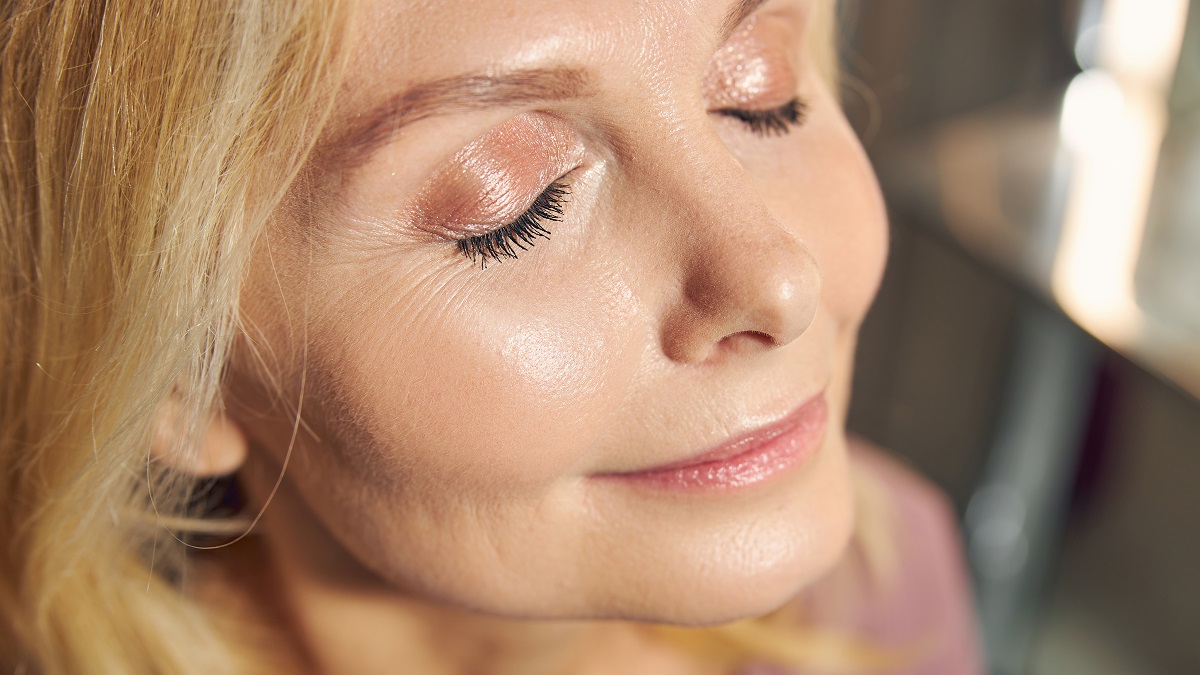Sleep is critical to your health and overall sense of wellbeing. But getting enough sleep may be easier said than done if you are experiencing nocturnal back pain. Chronic middle back pain while sleeping can disrupt your sleep enough to affect not just your nights, but yfour days as well. Keep reading for tips on how to manage or even eliminate middle back pain while sleeping.
What causes middle back pain while sleeping?
Your middle back is also referred to as the thoracic region. It roughly encompasses the area from the base of your neck to just below your ribcage, and includes the space between your shoulder blades.
Click Here to Visit the Store and find Much More….
Middle back pain at night is sometimes caused by something simple, such as bad posture or twisting too quickly. In these cases, the pain is usually temporary and you’ll find relief fairly easily with proper care and patience. In other cases, however, back pain has a more serious cause that will require professional intervention.
Middle back pain while sleeping may not be as widely discussed as other kinds of nocturnal back pain, but it can be just as distressing and must be taken just as seriously. Here are the major causes of middle back pain while sleeping.
Much has been made about the amount of time people spend sitting — whether in the car, at work, or in front of a screen — and the effects this can have on your health and lifespan. But it’s not just sitting itself that can impact your life; it’s also the way you sit.
Spending prolonged periods of time leaning forward or hunching over can strain your back, leading to pain throughout your neck, shoulders, and back.
Arthritis is a very common cause of joint pain. Mostly affecting older individuals, it is characterized by:
- Joint swelling
- Stiffness
- Pain
- Loss of range of motion
In addition to the pain and discomfort caused by the arthritis itself, arthritis can make you more susceptible to injury as well.
Back injuries run the gamut from minor to life-changing.
In cases of minor injuries, such as those caused by improper lifting technique or turning the wrong way, your pain will likely go away by itself within days or weeks. But if the injury is serious enough, it can lead to long-term problems, including chronic pain.
You have discs all along your spine in between each pair of vertebrae. Each disc is filled with a jelly-like substance that keeps your backbones from grinding against each other when you move.
A herniated disc occurs when one of the discs breaks open. A bulging disc is a similar condition, but instead of breaking open, the disc slips out of place and the inner substance “bulges” outwards but doesn’t rupture. Both conditions may be asymptomatic, or they may cause symptoms like pain, numbness, and weakness.
Herniated and bulging discs affect both the surrounding vertebrae and, often, the nearby nerves. These injuries are most common in the lower back, but they can also occur in the middle and upper back and even in the neck.
Vertebral compression fracture
A vertebral compression fracture, when one of your vertebrae cracks or collapses, is usually the result of osteoporosis or a traumatic injury, like a fall or an accident.
Vertebral compression fractures don’t always cause symptoms. When they do, the symptoms tend to vary widely, but there are some commonalities. These include pain and a permanent curve of the spine (kyphosis). The severity of symptoms will depend on the severity of the fracture and may worsen over time.
In rare cases, a tumor may cause middle back pain by pressing against the body parts (e.g. The nerves) near the spine.
Tumors can also trigger a vertebral compression fracture.
When is middle back pain while sleeping serious?
Most cases of middle back pain while sleeping are not serious. It is certainly disruptive, annoying, and even upsetting, but the underlying causes do not pose an immediate health risk. The symptoms can be safely treated with more conservative remedies.
Click Here to Visit the Store and find Much More….
However, as mentioned earlier, some middle back pain causes are more serious than others. If your middle back pain is accompanied by numbness and/or tingling, there may be underlying nerve damage. This can be caused by multiple conditions, some potentially dangerous, so it’s important to visit your doctor as soon as possible.
Further, any middle back pain that occurs with loss of feeling in your limbs or loss of bowel control is an emergency condition. Contact your doctor immediately if this occurs.
In addition, if you’ve tried some basic at-home remedies and your symptoms are still so severe that you can’t sleep well, make an appointment with your doctor as soon as you can. Without proper rest, your body and mind will quickly become exhausted. Any and all medical issues that prevent you from sleeping properly should be taken care of as quickly as possible.
How to sleep with middle back pain: 5 tips
Sleeping with middle back pain can be a challenge, but it isn’t impossible. Some remedies require making a purchase, while you can test out others tonight for no cost.
Below are some tips on how to sleep with middle back pain.
Most people use pillows to provide support for their head and neck while they sleep. But you can also use pillows to support your back and minimize pain while sleeping.
No matter which sleeping position you favor, there is a way to arrange your pillows to ease your middle back pain and get a better night’s rest. Try pillows between the knees if you’re a side sleeper or a small one under your knees if you sleep on your back. Try a different pillow to manage your neck pain if it’s leading to back issues.
Not working? Talk to your doctor for suggestions that could work for you.
Your nighttime routine can make a difference in how well you sleep at night.
Try performing gentle stretches before going to bed. This can strengthen and stretch your back to relieve pain and discomfort.
When it comes to managing back pain at night, not all sleeping positions are created equal. For example, sleeping on your stomach forces your neck to rest in unnatural positions, straining your back.
The Cleveland Clinic offers this guide to evaluate your sleeping position(s) and to figure out whether it might be necessary for you to try some new ones. Our earlier post also discusses at length how certain sleeping positions can cause back pain and which ones may be better for you.
Back pain can be exacerbated by an old, uncomfortable, or unsupportive mattress. One study suggests that medium-firm mattresses provide the best sleep quality. But don’t think of this as a hard and fast rule. You know your body better than anyone, and you are the only one who can choose the best mattress for you.
While mattress shopping, there are several things you can do to make sure you pick the right one. Before making a purchase, do some research on which mattress brand, style, and firmness might work for you. Some of this work can be done online, but it’s also important to go to the store, ask questions of the sales rep, and test out the mattress you’re considering. A mattress is a big investment, so take your time and do your homework before making a final decision. See if you can find options with a good return policy or risk-free trial period.
If a new mattress just isn’t in the budget at the moment, try a foam mattress topper. These are generally much cheaper than a full mattress, but they can still provide additional support if you need it.
Even after the night is over and you’re ready to start the day, you still have to get out of bed. As with choosing a sleeping position, there is a right way and a wrong way to do this.
Verywell Health provides a step-by-step guide on how to get out of bed without hurting your back.
Click Here to Visit the Store and find Much More….
How to relieve middle back pain while sleeping
If you’ve tried the tips above and still can’t sleep, then it’s time to move away from coping with middle back pain while sleeping and start actively treating it.
Fortunately, there are a multitude of ways to treat back pain. However, not all of them may work for you, and some may even be harmful, depending on your back pain cause or underlying medical conditions. Because of this, it’s always important to consult with your doctor before beginning any new treatment regimens.
Because poor posture is such a common cause of back pain that no matter who you are, it’s probably a good idea to pay more attention to how you sit and stand throughout the day.
Do you hunch your shoulders for hours as you work on the computer? Do you slouch when you walk? Get into the habit of assessing your posture regularly and adjusting it as necessary. Here’s some tips for improving your posture.
One of the simplest yet most useful ways to combat middle back pain is a combination of rest and gentle exercise.
Using your back muscles on a regular basis keeps them strong and helps them recover more quickly. That said, don’t push yourself too hard. If you feel any pain or discomfort while exercising, stop, rest, and modify the exercise if you try it again.
Heat and/or cold therapy is a time-honored method of pain relief. While many stores and pharmacies carry products such as heating pads to provide this treatment, you don’t need to buy anything if you don’t want to. Ice wrapped in a towel or a hot shower can also work.
These treatments are best done before or as you’re settling into bed. Do not use heat or cold therapy while sleeping.
Pain of all kinds is often treated with medication. Over-the-counter medicines like ibuprofen or acetaminophen are often enough to help you find relief for pain flare-ups.
If your pain is severe, you may need to get a prescription for a stronger medication. Regardless of which kind of medicine you take, be sure to follow all instructions and to never take more than the recommended dose. Talk to your doctor about any risks or side effects.
A physical therapist can help you reduce your pain and increase your range of motion.
When you go in for a visit, your physical therapist will examine you and determine what treatment or combination of treatments will help your back heal. You’ll work with them closely as they show you correct form for these exercises and lead you through exercise routines.
If you have suffered from an injury, you may need to wear a back brace for several weeks. This can help minimize pain and prevent re-injury. On the other hand, using a brace for a long time may weaken your back muscles.
As with all treatments, discuss the pros and cons with your doctor before you try it.
In some rare cases, more drastic solutions are needed to resolve middle back pain while sleeping. For chronic pain that doesn’t respond to more conservative treatments, you may need to consider surgical options with your doctor.
The type of surgery you undergo will depend on your middle back pain cause. For example, herniated disc pain may be treated by removing part or all of the affected disc in a procedure called a discectomy. A vertebral compression fracture sometimes requires a vertebroplasty, during which bone cement is injected into the spine to strengthen the damaged vertebra.

Click Here to Visit the Store and find Much More….
For More Information Related to Fibromyalgia Visit below sites:
References:
Fibromyalgia Contact Us Directly
Click here to Contact us Directly on Inbox
Official Fibromyalgia Blogs
Click here to Get the latest Chronic illness Updates
Fibromyalgia Stores


